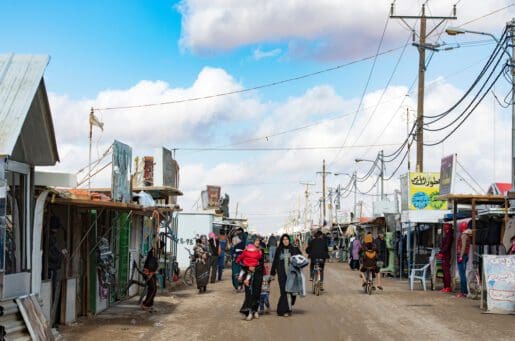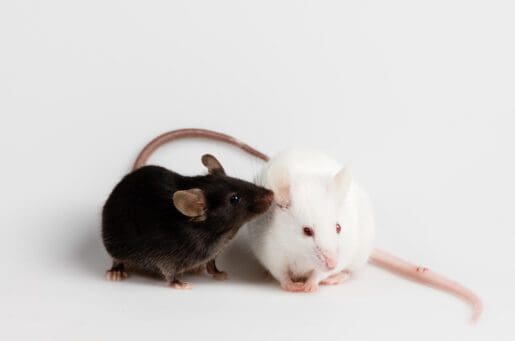Bioethics Forum Essay
Medicine, Morals, and Female Genital Cutting
The arrest of Jumana Nagarwala and her colleagues, in what has become the first case to be tried under the federal law prohibiting female genital mutilation, has brought female genital cutting practices into public conversation once again. Dr. Nagarwala, an emergency medicine physician from a small Shia sect known as the Dawoodi Bohra, was imprisoned in April for performing a religious ritual called khatna in an outpatient clinic in Detroit. This ritual involves the nicking of the prepuce, or clitoral hood, and is, for this community, grounded within Islamic scriptures and aimed at gender equity; young males are circumcised and females are nicked.
All forms of female genital cutting evoke passionate arguments both in the public square and in the academy. Over the past 30 years, there have been many international and local campaigns seeking to eradicate the practice. These efforts have met with limited success and some cultural groups have decried the trampling of their traditions. Notably, the Public Policy Advisory Network on Female Genital Surgeries in Africa reports that local residents may view genital surgeries as “aesthetic enhancements,” not mutilations.
Some bioethicists support harm-reduction strategies in which a minor type of female genital cutting is used in medical practice to ensure safety and prevent use of more severe forms of the procedure. Examples include the 1996 Harborview hospital compromise and the 2010 policy statement of the American Academy for Pediatrics.
In both instances allowing a “ritual nick” was argued to have no physical harms, to engender trust with minority communities, and to prevent more harmful procedures from taking place. The AAP clarified that it considered a nick to be less invasive than male circumcision. These proposals were met with vociferous objections and generated so much controversy that both parties eventually walked back their statements.
On the other side are bioethicists and women’s health advocates who argue that female genital cutting is an example of cultural violence perpetrated against women, disrespects autonomy over one’s body, and violates human rights. They propose a zero-tolerance strategy prohibiting all forms of the practice, including the nick. Allowing any type of it within the scope of medicine is thought to add undeserved legitimacy to them. This strategy has been adopted by leading international public health institutions, such as the WHO and the United Nations.
There is a dire need for a reasoned dialogue and open debate over female genital cutting and the ethical responsibilities of physicians. As a society, we need to understand the issues at stake, carefully weigh the harms to individuals and communities, and then use law and policy to regulate the boundaries of this practice.
Informed discussion can only take place when we use language that does not marginalize and pre-judge, that opens dialogue rather than obstructs it. Thus, like others before us, we believe that the term female genital mutilation, or FGM, should be discarded in favor of more neutral terminology. No doctor willfully seeks to mutilate. As we ask others to reexamine their rituals, we should reevaluate our use of language. For the terminology we use might reveal our unconscious biases, and a neutral stance is needed to allow the voices of those who engage in the practice to be heard.
Next, we require an accurate understanding of the procedures and data about their harms. To have a productive conversation about harm-reduction we need to understand all of the harms involved, both when the procedure is performed and when it is not. Thus, the medical data on harms and complications post-FGC; information about the social and psychological harms that accrue when these procedures take place and, importantly, when they are not performed; and anthropological data about the significance of these procedures in their cultural contexts all need to be brought to the dialogue. We need to objectively and critically examine both what we do and do not know before making moral assessments and delineating a path forward.
In sum, we call for a reasoned public dialogue about how best to eradicate harmful forms of female genital cutting through education, policies, and laws. We also encourage debate in the bioethics academy about how doctors can fulfill their ethical responsibilities while acknowledging the religious traditions of their patients.
Aasim I. Padela, MD, MSc, is an associate professor of medicine, director of the Program on Medicine and Religion, and a faculty member of the MacLean Center for Clinical Ethics at the University of Chicago. Rosie Duivenbode, MD, MSc, is a research intern at the Initiative on Islam and Medicine in the Program on Medicine and Religion at the University of Chicago. Follow their work on Twitter @Initiative4IM.













Why do you begin by confidently describing what Nagarwala did (reportedly to hundreds of girls) as a mere nick? How do you know what she has been doing? Evidence from the trial (photos; the girls’ testimony) apparently suggests otherwise.
And under what perverse regime could you equally confidently describe the motivations of the people who do this as having to do with gender equity? Even if FGM were remotely comparable to male circumcision, which it is not, the argument that a culture/religion (you seem to have these two rather mixed up in your essay) which mutilates the genitals of BOTH its boys and girls is thereby affirming gender equity is bizarre.
Please substantiate both of these claims:
1. That Nagarwala merely nicked; and
2. that the motivation for her behavior was gender equity.
Thank you. Margaret Soltan
George Washington University
Thanks, Margaret.
My apologies for the delayed response.
With regards to your questions:
Dr. Nagarwala, as well as the parents and their daughters, are all part of the Dawoodi Bohra community. This community is known to perform (what they refer to as) Khatna, although internal debates about its necessity are increasing. Descriptions of the procedure (scraping, nicking or rubbing of the clitoral hood) are largely in line with what we would call a ritual nick. While not impossible, it is unlikely she performed a more extensive procedure, as this is neither the custom nor a religious requirement in her community. That being said, the final answer to this question probably has to wait until her trial in June ’18.
Secondly, for the Dawoodi Bohra specifically, FGC and male circumcision are sourced within Islamic scripture and viewed as parallel procedures done for similar reasons. In their view men and women are “equally” upholding a religious ritual.
If you’d like to read a bit more, written by women who support the practice in this specific community, I suggest this page: https://dbwrf.org/faq
We need to objectively and critically examine both what we do and do not know before making moral assessments and delineating a path forward.
At last someone is truly talking scientifically considering the entire issue in totality instead of being judgemental and moral policing over others beliefs and rituals instead of getting away with the Western ever changing culture being the only right thing while they turn around full circles to come back to so many rituals to the extent of making them their patents! Time to be tolerant to others views, feelings and beliefs. Why should people enforce their rights on others. May be educate and bring out all pros and cons with good research and not biased prejudices yet let people be free to choose!
Truly support the above review points in this article.
A well balanced article. Islamic female circumcision as practiced by Muslims is not FGM. It is similar to male circumcision and involves the removal of only the clitoral hood (prepuce) which facilitates genital hygiene and improves sex life: https://muslimsincalgary.ca/female-circumcision-in-islam/
Totally agree with the writer. Such an unbiased approached is what is required.
A really insightful article. Most of the people screaming about these issues have absolutely no scientific or medical authority. They just take advantage of the “FGM” label and invoke hatred. We really need more medical professionals to scientifically point out what this procedure is all about.
The essay is straightforward defense of the FGM/cutting from the point that it is a part of the religion/culture. The burning of the widow wife was part of the culture in India. And so what? The retention of the male circumcision is not a reason to retain all other body manipulations.
Or we could prevent all non-medical genital modifications of those weakest among us, i.e., children.